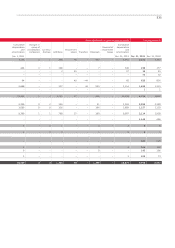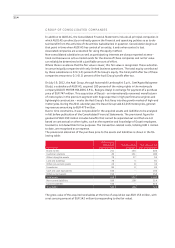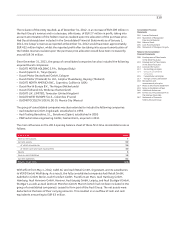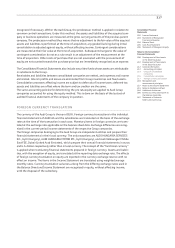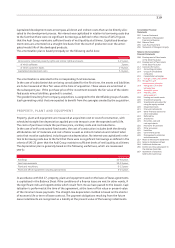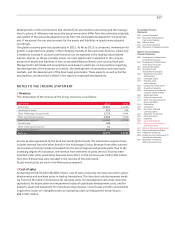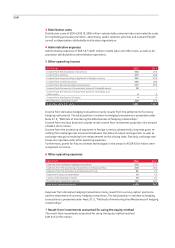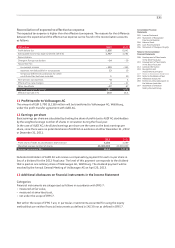Audi 2012 Annual Report Download - page 218
Download and view the complete annual report
Please find page 218 of the 2012 Audi annual report below. You can navigate through the pages in the report by either clicking on the pages listed below, or by using the keyword search tool below to find specific information within the annual report.
221
Consolidated Financial
Statements
202 Income Statement
203 Statement of Recognized
Income and Expense
204 Balance Sheet
205 Cash Flow Statement
206 Statement of Changes in Equity
Notes to the Consolidated
Financial Statements
208 Development of fixed assets
in the 2012 fiscal year
210 Development of fixed assets
in the 2011 fiscal year
212 General information
218 Recognition and
measurement principles
218 Recognition of income
and expenses
218 Intangible assets
219 Property, plant
and equipment
220 Leasing and rental assets
220 Investment property
220 Investments accounted for
using the equity method
220 Impairment tests
221 Financial instruments
224 Other financial assets and
other receivables
224 Deferred tax
224 Inventories
225 Securities, cash and
cash equivalents
225 Provisions for pensions
225 Other provisions
225 Liabilities
226 Government grants
226 Management’s estimates
and assessments
227 Notes to the Income Statement
233 Notes to the Balance Sheet
244 Additional disclosures
266 Events occurring subsequent to
the balance sheet date
267 Statement of Interests
held by the Audi Group
Cash flows are generally calculated on the basis of the expected growth rates in the sales markets
concerned. Estimated cash flow after the end of the planning period is based on a maximum rate
of growth of 1.5 (2.0) percent per year.
Impairment tests are carried out for development activities, acquired property rights, and prop-
erty, plant and equipment on the basis of expected product life cycles, the respective revenue and
cost situation, current market expectations and currency-specific factors. Expected future cash
flows to other intangible assets and fixed tangible assets are discounted with country-specific
discount rates that adequately reflect the risk and amount to 6.6 (6.8) percent before tax.
Impairment losses pursuant to IAS 36 are recognized where the recoverable amount, i.e. the
higher amount from either the use or disposal of the asset in question, has declined below its
carrying amount. If necessary, an impairment loss resulting from this test is recognized.
Sensitivity analyses have shown that even in the case of differing key assumptions within a rea-
listic framework, there is no need to recognize an impairment for goodwill and other intangible
assets with an indefinite useful life.
FINANCIAL INSTRUMENTS
Financial instruments are contracts that create financial assets at one company and, at the same
time, create financial debts or equity instruments at another company.
Financial instruments are recognized and measured in accordance with IAS 39.
According to this, financial instruments are divided into the following categories:
– available-for-sale financial assets,
– loans and receivables,
– held-to-maturity investments,
– financial assets measured at fair value through profit or loss.
The Audi Group does not have any financial assets that fall into the category of “held-to-
maturity investments.”
Financial liabilities are classed as follows:
– financial liabilities measured at fair value through profit or loss,
– financial liabilities measured at amortized cost.
The fair value option, in other words measuring certain assets and liabilities at fair value
through profit or loss, is not applied in the Audi Group.
Assignment to a category depends on the purpose for which the financial instruments were
acquired and is reviewed at the end of each reporting period.
For purchases and sales in the customary manner, recognition takes place using settlement date
accounting (in other words, on the day on which an asset is delivered).
Initial measurement of financial assets and liabilities is carried out at fair value.
Subsequent measurement is dependent on the category assigned in accordance with IAS 39 and
is carried out either at amortized cost or at fair value.
The amortized cost of a financial asset or financial liability, using the effective interest method,
is the amount at which a financial instrument was measured at initial recognition minus any
principal repayments, impairment losses or uncollectible debts.


